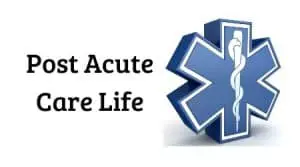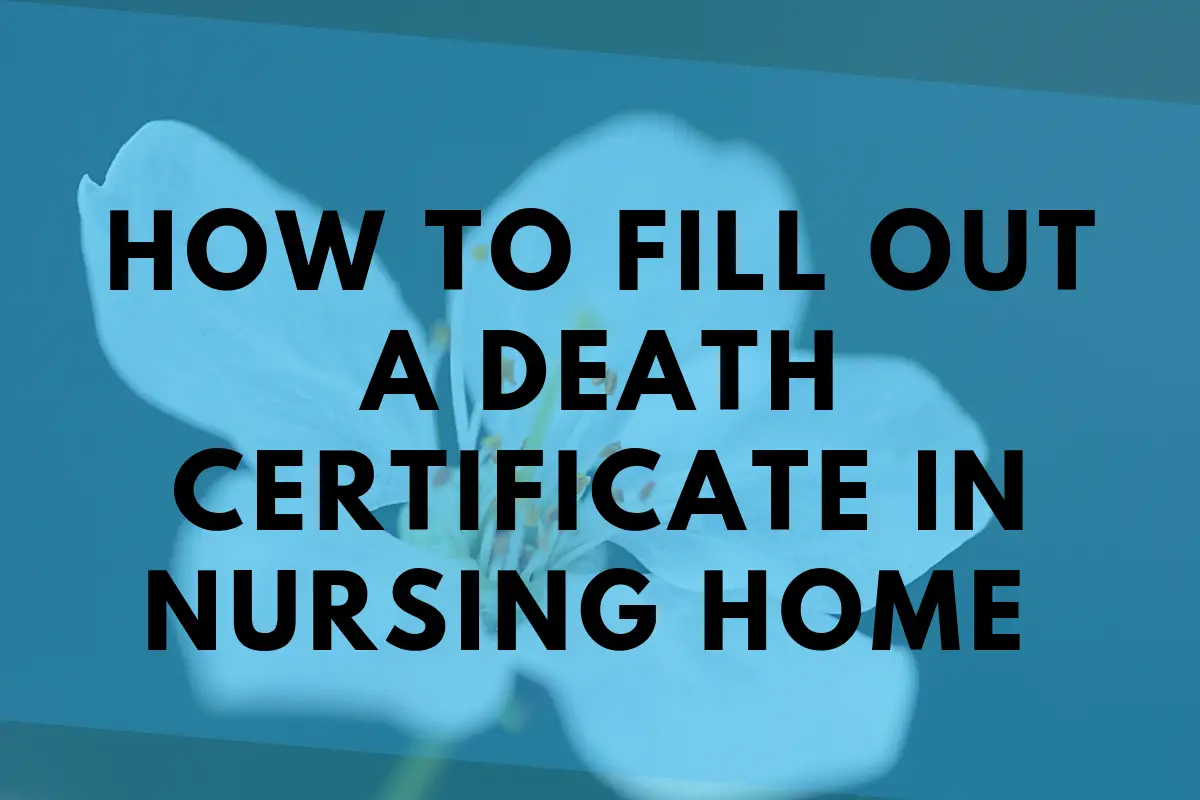When I first started working at a nursing home in Connecticut, it didn’t take long before I had to pronounce my first patient. It was a little lady who died peacefully and didn’t have many complications.
The problem was I hadn’t been taught how to pronounce a patient in the nursing home setting. I had worked in the emergency room and was used to having a doctor around or medical resident pronounce the patient.
This patient was Do Not Resuscitate status (DNR) and was found without a heartbeat and not breathing. After evaluating the patient and determining the patient had passed, I declared the patient and completed my progress note.
Later in the day, the supervisor handed me the death certificate to fill out. I had never seen the form before and didn’t know which diagnosis codes to use. The supervisor had never filled out the form and couldn’t assist me.
Do I pick the chronic illnesses that were documented by previous providers? Or the recent upper respiratory disease that she had and was “improving from” per nursing staff?
The Uniform Declaration of Death Act (1980) declares that death has occurred when an individual has sustained either
- Irreversible cessation of circulatory and respiratory function or
- Irreversible cessation of all functions of the entire brain including the brain stem.
- It also states that a determination of death must be made in accordance with accepted medical standards but does not specify what those standards should be.
When you look at a death certificate, you will see that it includes lots of personal information on the patient. It will consist of the name of the patient, date of birth, address and more. All these questions will need to be completed either by the supervisor in the facility or the practitioner filling out the certificate.
The doctor, APRN, or physician assistant will need to fill out the cause of death along with intermediate causes, presumed onset and the date of death, and underlying causes.
There will be ancillary questions dealing with tobacco and pregnancy that will need to be answered.
You will need to write in your full name with signature and credentials. Include the date, address of pronouncing provider, and make sure the name is written on the document.
The rest is usually filled out by the medical examiner or staff member.
Do not do the following when filling out the certificate
- Do not use stamps for signatures
- No erasing or “scratching out” with a pen
- No facsimile signatures
- Reproductions or duplicates are not acceptable.
The cause-of-death sections
According to the CDC, Part I is for reporting a chain of events leading directly to death, with the immediate cause of death (the final disease, injury, or complication directly causing death). Only one cause should be written on each line. Line (a) must always have an entry.
The “intermediate causes” contribute to death such as congestive heart failure or myocardial infarction.
When possible, include the underlying causes, which may have contributed to the end, such as obesity or coronary artery disease.
Part II includes other illnesses the patient had even if not a direct cause of their death. The other contributing diseases will help with statistical collections.
Remember that the Center for Disease Control (CDC) wants the “best estimate of the interval between the presumed onset and the date of death” for each diagnosis listed. The terms “unknown” or “approximately” may be used as well as terms such as minutes, hours, or days. Just do not leave the time estimates blank.
Do not use the terminal event “cardiac arrest or respiratory arrest” for the line (a). You can use the terminal event when combined with the contributing factor such as “cardiac arrest due to blunt impact to the chest.”
When listing end-organ failure, make sure to include the etiology on the line(s) beneath it. For instance, if the patient had kidney failure, was it due to Diabetes?
Include the following with neoplasms
CDC wants to know as much as possible when reporting a neoplasm as the cause of death.
- Primary site or that the primary site is unknown
- Benign or malignant
- Cell type or that the cell type is unknown
- Grade of tumor
- Part or lobe of the organ affected.
Documentation
In most states, the death certificate will list the time of death, cause of death, and place of death.
· Did tobacco use contribute to death?
· If female, was she pregnant at the time of the death? If the female is either too old or too young to be pregnant, check the “Not pregnant within the past year” box.
· Take care to make the entry legible and use permanent black ink.
· Do not abbreviate conditions
Always check the Manner of Death
The manner of death (Natural, Homicide, Accident, Pending investigation, Suicide, could not be determined)
Used to:
1) Determine accurate causes of death,
2) Processing insurance claims
3) Statistical studies of injuries and death.
Death with Elderly
There are special considerations when it comes to the elderly. According to Henry Hanzlick MD:
- Elderly people sometimes seem to die “with their disease” rather than “of their disease.”
- Several diseases may coexist, none of which alone or together clearly caused death.
- Death may occur many years after “normal life expectancy” and the relationship of aging, disease, and death are unclear.
- Conditions that may not occur or be fatal in a young person may cause the death of an older adult.
- Dementia or injury may be overlooked as the underlying cause of death.
- A specific underlying cause of death (such as the cause of a “stroke”) may be overlooked.
- Fractures are common, and non-traumatic pathologic fractures must be distinguished from fractures due to external conditions (injury).
- Elderly people may be more susceptible to death because of a pre-existing condition or “frailty.”
Do not use these adjectives on the death certificate
- Infirmity
- Old age
- Advanced age
- Frail
If you are unable to figure out the cause of the disease process, you must document with words such as “unknown, undetermined, probable, presumed, or unspecified.” You need to let people know that you didn’t just ignore the cause.
When to report a death to the medical examiner
The medical examiner investigates deaths that are unexpected, unexplained, or if an injury or poisoning was involved.
Causes of death that should be reported:
Abuse or neglect: All suspected cases of abuse should be reported unless ruled out.
Inconspicuous injury: When the patient has an unwitnessed fall, traumatic fractures, and other types of injuries you should report the death.
Suicide: When the non-suicidal cause of death cannot be determined, the possibility of suicide should always be considered and reported.
Hypothermia and hyperthermia: These types of death should be reported because external conditions such as injury or poisoning may be involved. If you believe it to be related to an illness, then document this as an intermediate cause of death and list the underlying cause.
If the patient was possibly poisoned or had an injury resulting in death, you will need to either have a supervisor or yourself call the medical examiner/coroner to report the death. The examiner will then determine if there is a need for a possible autopsy.
The medical examiner/coroner will either complete the cause-of-death section of the death certificate or waive that responsibility. The medical provider will need to fill out and sign the document if the medical examiner doesn’t take on the case.
If you are in doubt as to whether the death is reportable, report it.
Failure to complete the death certificate can be a criminal offense
The original death certificate is given to the funeral home or mortuary. The failure of a physician to immediately submit the required form to the government (to trigger the issuance of the death certificate) is often both a crime and cause for loss of one’s license to practice.
If you are not going to come into the nursing home to sign the certificate, make sure to delegate the responsibility to another medical provider such as APRN or Physician Assistant. However, it is the ultimate responsibility of the physician to make sure the certificate is completed.
Distractors from the real cause of death
When trying to determine the actual cause of death, the complication can sometimes be confused to be the cause. Such as pneumonia, which is reported as an ”intermediate cause” of death while the primary diagnosis, such as cerebrovascular disease or chronic lung disease is the actual cause.
Always try to identify the underlying cause of death and its related complications, which made the problem worse such as sepsis related to neurogenic bladder associated with the main cause of ALS.
Some examples by the college of American pathologist include:
- Decubitus ulcers are related to some underlying causes such as neurologic illness.
- Pulmonary embolism is due to hyperviscosity.
- Malnutrition because of an illness such as cancer.
So always try to identify the root cause of death then add the complications that lead up the death of the patient.
Funeral home director Role
The funeral home directors are usually helpful in assisting the medical providers in completing the death certificate. Often, they will type in all the information regarding the patient, leaving you with your portion to complete and sign.
The funeral director often picks up the certificate at the nursing home or even in the doctor’s private practice. When they come to the office, they will often have the “face sheet and diagnosis list” given to them by the facility to assist in making the decision.
Please be polite and try to be timely if filling out the certificate. The director needs your signature to complete work. The funeral director is part of the team and should be treated as such.
Conclusion
If there are not any know causes of death, part I may be reported as “Undetermined Natural Causes” while any co-conditions are reported in part II.
Also, do not overlook dementia as the underlying cause of death. This disease process has multiple manifestations leading to death.
You want to take filling out the death certificate seriously. This form is used for many official functions and can affect the outcome of court cases and family insurance settlements, etc.
The cause-of-death statistics continue to be one of the most valuable databases for monitoring health at the local, state, and national levels, and for epidemiological and medical research.
References:
Altman, Lawrence K. (1 July 2013). “Making the Right Call, Even in Death”. The New York Times.
CDC. Physician Handbook on Medical Certification of Death. Department of Health and Human Services. (2003) https://www.cdc.gov/nchs/data/misc/hb_cod.pdf Retrieved September 29, 2019
DECLARATION OF DEATH. Resolution and Position Statement, March 1, 2003. https://paltc.org/amda-white-papers-and-resolution-position-statements/declaration-death Retrieved October 1, 2019
Hanzlick R. Cause of Death Statements and Certification of Natural and Unnatural Deaths. Protocol and Options. American College of Pathologists. (1997) https://name.memberclicks.net/assets/docs/8c58e7e9-b2fa-44a9-8d1b-3085cd14bf25.pdf Retrieved October 1, 2019
Instructions for Completing the Cause-of-Death Section of the Death Certificate. U.S. DEPARTMENT OF HEALTH AND HUMAN SERVICES Centers for Disease Control and Prevention National Center for Health Statistics. https://www.cdc.gov/nchs/data/dvs/blue_form.pdf Retrieved September 28, 2019

